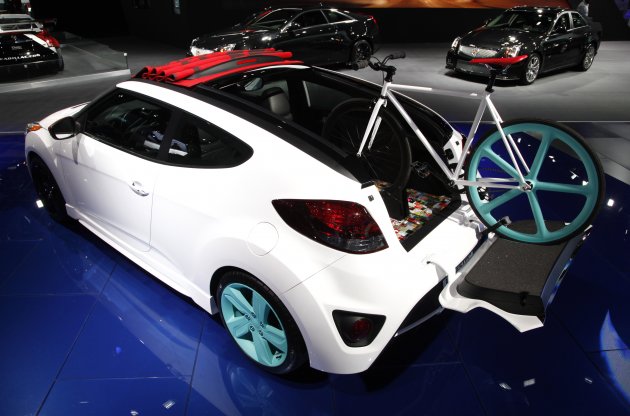Carmakers race to find voice-to-text technology – but that’s just the tip of the iceberg. Our cars may soon be able to tell us where they are in the parking lot.

CARS THAT PARK themselves, radar-guided safety sensors and infotainment systems with web access; automakers are competing for customers who now expect constant innovation. The speed at which the new features are migrating from premium models downward and spreading among brands is accelerating as automakers jostle for attention in an increasingly crowded market.
“The hottest new technology in cars today is voice-to-text functionality that reads a driver’s emails or texts as they come in and allows the driver to dictate a response without looking away from the road,” Karl Brauer, senior analyst at Kelley Blue Book tells us.
Automakers have aligned themselves with tech giants to lure customers with increasingly complex – but hopefully still intuitive – systems to transform their consoles into souped-up smart phones.
Touch screens reminiscent of an iPad have been added to consoles outfitted with apps like Pandora music streaming. Then there are proprietary apps aimed at fixing life’s little problems.
Lost in a parking lot?
Touch a button on your phone and your lost car will pop up on a map. Still can’t find it in the parking lot? Tap again and the phone will honk your horn. Locked the keys inside? Another button opens the door.
Worried that your teenager is driving too fast or hanging out with the wrong crowd? There’s an app that will send you a text message if they surpass a chosen speed or leave a designated area.
The real challenge for automakers is to make sure all of this technology doesn’t become a dangerous distraction, said Art St. Cyr, head of product planning at American Honda. Keeping it out of the car simply isn’t possible: people are too attached to their smart phones and “don’t want to be disconnected,” he said.
“The key is to reduce the cognitive load,” St Cyr told reporters on the sidelines of the Detroit auto show.
Voice activation certainly helps, but automakers have also invested in developing safety systems that can compensate for distracted or sleepy drivers. Initially available only in luxury cars and then premium models, complex collision-avoidance technology is being introduced to the mass market.

A bicycle is shown perched out the rear and rooftop of a Veloster coupe at the North American International Auto Show in Detroit on Wednesday. Transportation of the two-wheeled variety is sharing the floor at the auto show in Detroit along with the latest cars, trucks and concept vehicles. Bikes weren’t the focus of presentations during this week’s press previews, but they’re often used in marketing cars. (AP Photo/Paul Sancya)
Chrysler is decking out a new midsized 200 sedan - unveiled in Detroit last Monday with an entry price of just $21,700 – with a full spectrum of safety features previously only available in pricier models. Video cameras mounted onto the windshield detect lines in the road to warn drivers if they are straying out of a lane and electrical steering wheels will even kick the car back into position.
Radars mounted under the grill can see through fog to measure the distance to the nearest vehicle, register a change in speed and then slow down or even stop the car if a driver doesn’t notice the looming brake lights. And a blind spot monitor will sound an alert if a driver misses a blinking light in the side view mirror and flips the turn signal.
Rear view cameras are becoming standard features even on entry-level models like Honda’s new compact Fit and Kia is stepping up the game by adding front and side views to the K900 which was unveiled in Detroit. Plenty of premium models are helping drivers with pesky parking problems by measuring distances and controlling the steering wheel for the perfect parallel — or even perpendicular — parking job.
BMW takes it a step further in its new electric i3 which hits showrooms in a few months. Not only does it help to search for parking spots big enough to squeeze into, it will then completely take over the job by controlling the steering, braking and acceleration.
Automakers are also competing with simpler features like a vacuum cleaner in Honda’s top-selling Odyssey minivan, a sensor that will pop the trunk of a Mercedes, Ford or Cadillac when your hands are full, and “EZ-lift” tailgates on the new GMC pickup.
But the biggest innovations are under the hood, said Bob Carter, head of automotive operations at Toyota Motor Sales USA. Complex hybrid engines have become commonplace and people are even getting used to seeing purely electric cars like Nissan’s Leaf on the road.
The holy grail of green cars – hydrogen fuel cell engines that emit nothing but water vapor – is already on the road in test markets and will be hitting Toyota showrooms next year.
Rivals Ford, Honda, BMW, Daimler, and Renault-Nissan won’t be far behind.
No comments:
Post a Comment
Through this ever open gate
None come too early
None too late
Thanks for dropping in ... the PICs